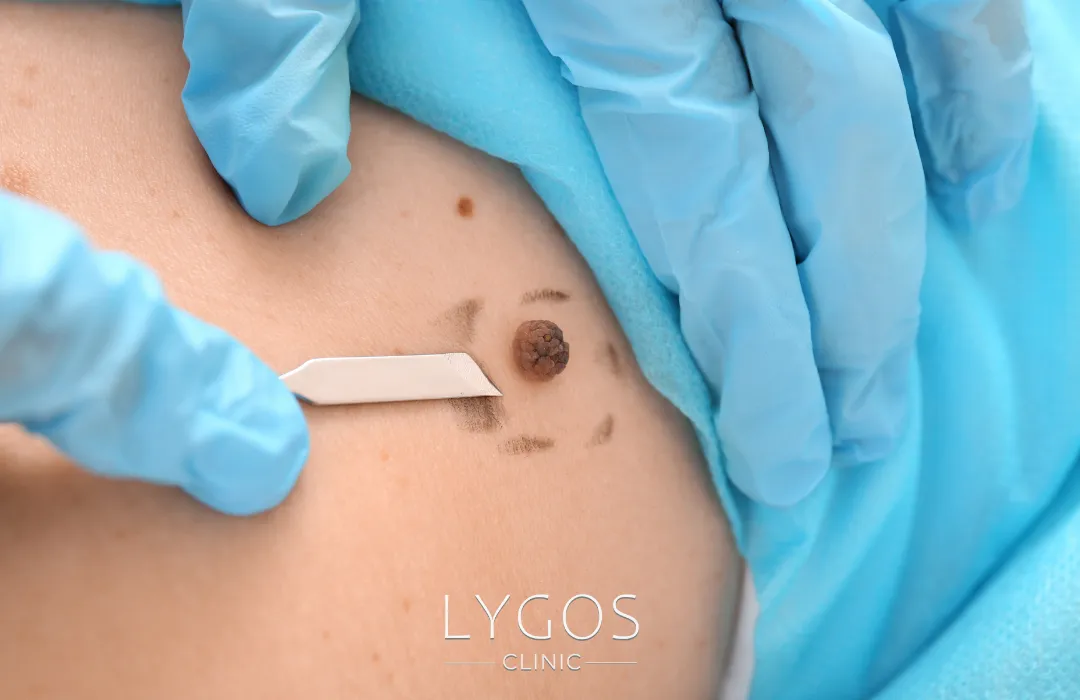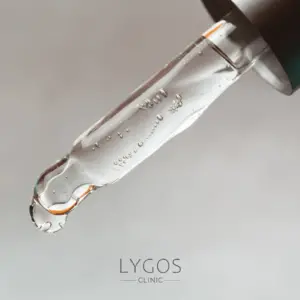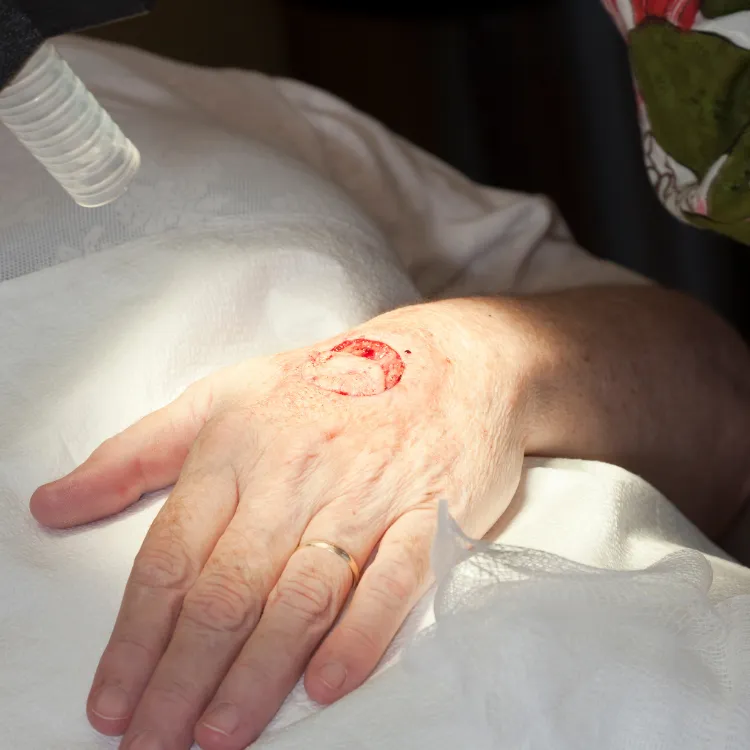Mole Removal
Moles are common skin growths that many people have. If a mole becomes bothersome or shows signs of malignancy, it can be safely removed using dermatological methods. Mole removal can be performed for both aesthetic and medical reasons, using a variety of techniques. However, it is essential that the entire process is planned and carried out by a qualified specialist. With proper care before and after the procedure, patients can often achieve a scar-free result and a more comfortable appearance.
Chose Your Topic
Get in Touch
Get professional treatments in Turkey at Lygos Clinic, offering effective, affordable treatments for a healthier and more aesthetically pleasing life.
You can contact us via WhatsApp and Instagram for a quick response.

What is Mole Removal?
Mole removal is a dermatological procedure involving the elimination of moles that may cause discomfort, either physically or aesthetically. Moles are dark patches or spots caused by overactive melanin-producing cells. While some moles are benign and harmless, others may have the potential to become cancerous, which makes professional evaluation important.
Moles can vary in color (brown, black, blue, pink, or even skin-toned) and in shape (round, oval, flat, or raised). They may change in size or number over time due to factors like hormonal shifts (e.g., during puberty or pregnancy), aging, sun exposure, or certain illnesses.
If a mole becomes bothersome due to its appearance, location, or suspected malignancy, removal may be considered. In all cases—whether benign or malignant—mole removal should be done by a qualified medical professional.
Is Mole Removal Dangerous?
Before mole removal, the patient undergoes a detailed examination to assess the mole’s structure, depth, and location, as well as the patient’s skin type and overall health. This evaluation ensures that the removal procedure carries no undue risks.
When performed by an experienced physician and when no underlying health issues are present, mole removal is generally considered a safe procedure.


How is Mole Removal Operation Performed?
Mole removal should always be conducted by a medical specialist. During the consultation, patients are encouraged to share their concerns and the reasons for seeking removal. Clear communication helps the doctor choose the most appropriate removal method.
Once the appropriate method is determined, local anesthesia is administered to ensure a pain-free experience. The most common approach involves surgically excising the mole with a scalpel. The area is then stitched to close the wound and promote proper healing.
In the shaving technique, the mole is removed by carefully shaving it with a scalpel. This method is typically used for non-cancerous moles.
Is Mole Removal Harmful?
Many people wonder if mole removal is harmful. The short answer: it is not. Surgically removed moles do not increase the risk of skin cancer. In fact, if a mole is suspected to be cancerous, it is medically necessary to remove it.
Complications are rare but can include mild infection or scarring. These risks are minimized when the procedure is done by a skilled and experienced physician.


How to Recognize Benign Moles?
Any abnormal development on the skin is called a skin lesion. These lesions, which carry the risk of turning from benign to malignant, may need to be followed by a doctor. Therefore, consulting a specialist physician plays a critical role in understanding benign moles and ending possible suspicions.
Benign moles should be differentiated from malignant moles. Moles removed by surgical intervention may also need to be examined pathologically. It is also necessary to pay attention to the following points in understanding benign moles:
The shape of the benign mole is symmetrical.
The borders of the mole are smooth.
The benign mole is the same color as the body.
The size of the mole is generally small.
The size and color of the mole remains the same in case of any problems.
However, not all benign moles look the same. It’s always best to have a dermatologist examine any mole you’re unsure about.
How to Recognize Malignant Moles?
Over time, some moles may change in ways that indicate malignancy. These changes often occur quickly—within 1 to 2 months—and should not be ignored.
Signs of a potentially malignant mole include:
- Rapid change in size or shape
- Asymmetry
- Irregular borders
- Multiple or unusual colors (e.g., black, red, or blue)
- Diameter greater than 5mm
- Bleeding, crusting, irritation, or delayed healing
If you notice these signs, seek medical evaluation promptly:

How to Recognize a Cancerous Mole?
To detect a cancerous mole early, regular skin examinations are crucial—especially for individuals with a higher risk due to genetics or sun exposure.
- An asymmetrical appearance of a mole on the body carries the risk of cancerous moles.
- The mole has regular borders under normal conditions. However, in patients with cancer risk, these regular borders turn into an irregular structure.
- It is also known that moles with the same color structure as the body are formed in different colors in people with cancer.
- While moles are usually small in size, cancerous moles have a larger structure.
- In some cases, the mole may remain the same, but changes and growths occur in melanoma.
Even if the mole appears unchanged, melanoma can grow beneath the skin. Only a dermatologist can make a definitive diagnosis.

What are Sking Tags?
Skin tags are harmless, soft skin growths that affect roughly one in four adults. They typically appear in areas like the neck, underarms, or groin and are more common in individuals with a family history of skin tags.
These growths don’t pose any health risk and rarely cause discomfort unless irritated by friction or trauma. Skin tags are skin-colored, have no deep root, and do not carry any cancer risk.
Although medically harmless, they may be removed for aesthetic reasons.
Skin Tags Treatment
Surgery: The person who will have the skin tag is anesthetized and is prevented from feeling pain and soreness. Then, it is removed by surgical intervention.
Electrosurgery: Another method to remove skin tag is electrosurgery. In this method, high frequency electrical energy devices are used. The treated area is consciously damaged and the mole is removed.
Ligation: In the ligation method preferred for the fall of the mole, the area is strangled with surgical thread.
Cryotherapy: In this method, the skin tag is reduced by freezing with liquid nitrogen.
Natural Method: Apart from sking tag removal procedures, natural treatment methods are also used. However, there is no scientific study of these methods.
Facial Moles Removal
Because the face is highly visible, moles here can cause psychological and aesthetic concerns. For facial moles, a precise surgical technique called excision is commonly used. The mole is anesthetized and carefully removed, and small stitches are applied to close the area and minimize scarring.
Stitches are usually removed after about a week. Patients must follow aftercare instructions closely to avoid complications and promote smooth healing.


Laser Mole Removal
Laser mole removal is a fast, minimally invasive, and relatively painless procedure, often completed in one session. However, not all moles are suitable for laser treatment—particularly if malignancy is suspected.
After a consultation and confirmation that the mole is benign, laser removal can be performed. The area is typically covered with a protective bandage post-procedure. Mild redness is common and usually temporary.
After Mole Removal
It is necessary to pay attention to wound care after mole removal and take precautions to prevent scarring in the area. Care procedures vary according to the health profile of the patient, who should listen to the advice of experts. Since mole removal is performed with or without stitches, their care also differs. In general, the things to be considered after mole removal can be listed as follows:

- The care to be applied to the scars and stitch marks formed in the area after mole removal should be applied according to the instructions given by the doctor. It is also necessary to pay attention to general skin care and sterilization conditions.
- The area stitched with surgical operation in the mole removal operation should be protected from sunlight for about 6 months.
- It is recommended to apply sunscreens to protect the treated area in sunny weather after mole removal.
- Protecting the scar tissue after mole removal plays a critical role. Therefore, movements that will stretch the skin should be avoided. Also, risky movements should be avoided to prevent bleeding in the treated area.
- Finally, a healthy diet should be followed to increase blood circulation and cell renewal. You can also support the area with light massages.

Mole Removal Healing Process
The healing process after mole removal varies based on the method used, the individual’s skin type, and overall health. Healing occurs in three phases:
1. Inflammatory Phase (first 5 days): The body responds to the procedure with mild inflammation.
2. Proliferation Phase (up to 1 week): New cells form to replace lost tissue.
3. Maturation Phase (up to 12 months): The scar tissue gradually softens and becomes less visible.
Stitches are usually removed within 1 to 2 weeks. While noticeable improvement occurs in the first month, full healing can take up to a year.
Laser Mole Removal Costs
The cost of laser mole removal in Turkey ranges between 750 TL and 3000 TL per session. Prices vary based on:
- The clinic’s equipment and facilities
- The doctor’s expertise
- The mole’s size, color, and location
To receive a personalized estimate and learn more about the process, contact Lygos Clinic’s expert team.


Mole Removal Costs
Mole removal prices depend on:
- The chosen removal method
- Number, size, and location of moles
- Doctor’s experience
- Clinic location and technology used
- Whether the mole is benign or malignant
Because of these variables, contacting the clinic directly is the best way to get an accurate cost estimate.
Get in Touch
Get professional treatments in Turkey at Lygos Clinic, offering effective, affordable treatments for a healthier and more aesthetically pleasing life.
You can contact us via WhatsApp and Instagram for a quick response.
Frequently Asked Questions About Mole Removal
BLOG

Breast Lump | Types: Benign, Malign and Causes | LYGOS 2025
Breast Lump While cancer stands out as one of the most common health problems today, early diagnosis rates are also

What is Salicylic Acid? | How to Use & Benefits | LYGOS 2025
Salicylic Acid Salicylic acid is a powerful ingredient that is frequently encountered in today’s skin care products and has become

Estrogen Hormone | Effects on the Female Body | LYGOS 2025
Estrogen Hormone As the human body works in harmony with nature’s marvellous balance, hormones play a vital role in this






